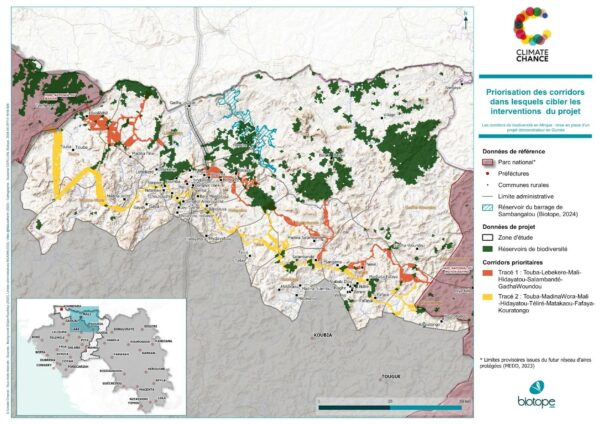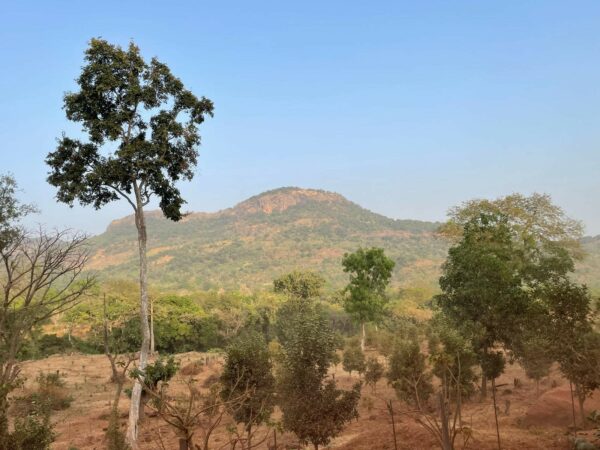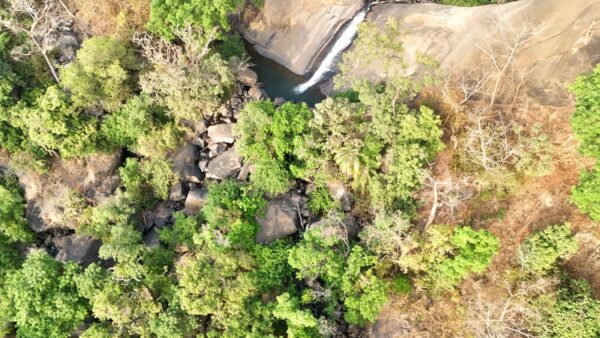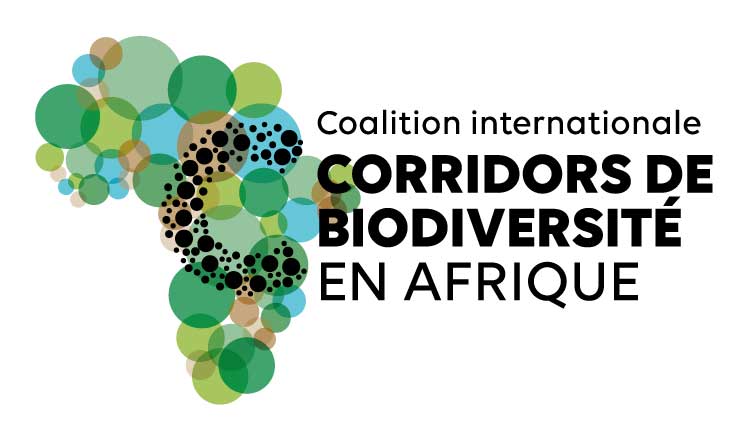This website uses cookies so that we can provide you with the best user experience possible. Cookie information is stored in your browser and performs functions such as recognising you when you return to our website and helping our team to understand which sections of the website you find most interesting and useful.
From February 12 to 21, 2025, Ronan Dantec, President of Climate Chance, and Alice Malek, the association’s Director of Biodiversity, visited Guinea as part of a major field mission, marking the official launch of activities for Phase 2 of the Biodiversity Corridor project.
A Key Project for Biodiversity in Guinea
Launched under the international coalition on “Biodiversity Corridors in Africa,” co-chaired by France, Gabon, Guinea, and Tanzania, the project in Guinea aims to create, restore, and maintain an ecological corridor linking Badiar National Park to the OKKPS Landscape via the Moyen-Bafing National Park. The three-year renewable initiative seeks to establish a replicable methodology across the African continent to attract long-term funding for the conservation of ecological connectivity areas through biodiversity site certification, with the aim of generating carbon and biodiversity credits.
Launch of the Second Phase of the Project
Following the completion of the first phase in October 2024, which identified the northern part of the corridor as a priority area, the second phase of the project was officially launched during this field mission. Its goals were to strengthen collaboration with the Ministry of Environment and Sustainable Development and local stakeholders, assess the feasibility of planned actions, and increase local community involvement in the project’s implementation.

A Major Field Mission
The mission team included seven experts, among them Ronan Dantec, President of Climate Chance, and Aboubacar Samoura, Director General of the Guinean Office for National Parks and Wildlife Reserves (OGPNRF). They visited multiple locations across the country — from Conakry to Koundara, through Kindia, Labé, Mali, and Lébékéré — meeting with local authorities, visiting strategic sites of the Corridor, and engaging with community organizations involved in biodiversity conservation.

Tangible Outcomes on the Ground
The mission marked a significant step forward in collaboration with the Ministry of Environment and Sustainable Development (MEDD). The Secretary General, Karim Samoura, reaffirmed the project’s alignment with the development of Guinea’s protected area network. He strongly encouraged the pooling of results and coordination among various projects in the same region through the OGPNRF.
The Corridor project operates in a territory of high national and international importance: the Fouta Djalon Massif, which is in the process of being designated as a UNESCO World Heritage Site. This area is rich in biodiversity and is the source of several major rivers in West Africa, making it a national priority for environmental protection.
Key encounters also took place in the field, notably in Middle Guinea, in Labé, Lébékéré, and Mali. Local NGOs praised the Corridor project’s innovative approach, which includes a results-based financing model aimed at ensuring the sustainability of environmental initiatives and strengthening long-term community engagement.

A Successful Mission, Challenges Ahead
This mission enabled Climate Chance and its partners to identify strategic collaborations to deepen, structure future actions, and uncover essential funding opportunities. It represents a crucial step toward the sustainability and impact of the Biodiversity Corridor project in Guinea, ensuring effective coordination between institutional, economic, and community actors.


